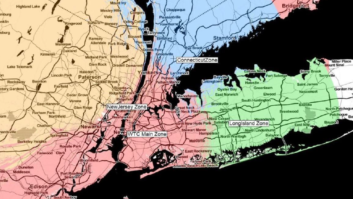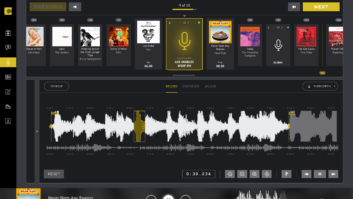The scope of the Federal Communication Commission’s AM radio revitalization order is expansive. Industry observers have begun to decipher the FCC’s language to get a handle on how the order will affect the U.S. broadcast industry.
Many deem FCC the effort a viable one.

iStockphoto/ARTPUPPY “As far as the items in the report and order, I believe all are appropriate and will offer some relief to AM broadcasters,” said Milford Smith, vice president of radio engineering at Greater Media, noting for instance the elimination of the ratchet rule.
The industry’s dominant trade association agrees. “We think this was a good outcome, and we will continue to work with the FCC to develop creative ideas that will help revitalize AM radio,” said National Association of Broadcasters spokesman Dennis Wharton. He did not elaborate on further solutions the NAB plans to pursue.
Others praised the FCC for recognizing the vital role that AM radio plays in emergency situations.
The commission appears to be trying “to make life easier for AM operators who are committed to maintaining this valuable national emergency communications resource,” said Richard Rudman, a member of the Broadcast Warning Working Group. He pointed to the efforts of Commissioner Ajit Pai who, according to Rudman, “got the word out that FM may help save the AM band.”
The actions are a step toward an eventual long-term overhaul of the AM broadcast band “that will take into consideration the most fundamental reasons why listeners turn from AM radio to other media sources,” said Tom King, president of Kintronic Labs, an AM systems manufacturer.
King said the FM translator modification window and translator application auctions for Class C and D stations in particular will serve to provide an “economic stimulus to these lower-income stations where it is needed the most,” he said. “This is a long-awaited rule change that has to be welcome news for the AM broadcasters in small- to medium-sized markets.”
King praised the commission’s adoption of MDCL control technologies, which he said will help stations reduce transmitter operating costs. “It is a rule that is long overdue and should be welcomed by AM broadcasters that have transmitters with this option.”
The Multicultural Media, Telecom and Internet Council called the order a “tremendous step forward in promoting diverse broadcast ownership,” pointing to the relaxation of restrictions on transmitter locations for day and nighttime service.
“This is welcome news for diverse radio owners across the nation who are struggling to survive in a world where consumers are turning more to the Internet to get their entertainment, news and information,” said Kim Keenan, MMTC president and CEO.
The National Religious Broadcasters group also was pleased: “This order takes important steps to improve this long-relied-upon and relevant radio band serving local communities,” said Dr. Jerry Johnson, president and CEO of the NRB.
LIMITED “SPLASH”
But reactions to specific aspects of the order varied.
“The segmentation of both the 250-mile move window and the subsequent new translator window in which Class C and D station get a first bite at the apple was not expected, at least by me,” said Greater Media’s Smith.
“There are plenty of stations in other classes, B particularly, which would certainly have benefited from that initial bite. Obviously those stations will ultimately get that opportunity — but with necessarily more limited choices in terms of both available translators and spectrum.”
Said Kintronic’s King: “I had honestly hoped that there would be a further reduction in the required minimum antenna efficiency below the 25 percent that is being proposed. I would hope that this could be lowered on a case-by-case basis where there are no international considerations and where land is particularly scarce, such as in Hawaii.”
He would like to see further changes: “Regarding the daytime and nighttime community coverage requirements, the AM station allocation rules need to be overhauled with regard to the high noise level that is present in the band,” King said. He suggested that consideration be given to authorizing higher transmitter powers to overcome the noise environment if the FCC is not willing to get behind a concerted effort to quantify major noise sources in the AM band and in the 0.5 MHz to 2 GHz band.
Others say more needs to be done.
“The commission has once again missed a chance to make a much bigger splash,” wrote AM station owner Larry Langford in a commentary on the Radio World website; he pointed to a dearth of movement on receiver standards.
“We are being told it’s revitalization, but the listeners would say it’s the same old mud and noise,” he wrote, “And unless we do a lot more to fix the end sound, listeners will be tuning for those new translators every time, while the AM service itself keeps withering away.”
Smith of Greater Media said, “I think most AM broadcasters would have preferred an AM-only window for new translator applications initially; what is proposed seems to strike a balance between what was politically possible and the very real need of AM broadcasters for relief.”
The FCC did not include a general FM translator window for AM stations in this order, a fact that “generated a lot of unhappiness,” said Ben Dawson, managing partner and senior engineer of Hatfield & Dawson. “But I’m not sure it’s entirely justified.”
Some observers feel a general translator filing window would not be a great benefit to many stations because of congestion of the FM band, he said. “By adopting the two windows … the commission may actually have taken an action with somewhat more benefit than a general window would have had.”
The rules for location and coverage of translators have been liberalized, however, and that is a benefit, Dawson said.
AM TALKBACK
Here’s a sampling of reactions from Radio World readers to the AM revitalization order, as posted at radioworld.com.

”Much better to clear the band of abused, misused and virtually abandoned stations so those who do know what they are doing can get about the business of doing it.”

”This would have been great 10 years ago. I think time and money would have been better spent on how to let the AM service die a natural death and transition into an expanded FM band, made up of old TV Channels 5 and 6.”

”Too little to late? Hardly. Not for me and my little station; it means I will survive and my hometown community gets covered.”

”If the FCC were seriously concerned about the noise trashing of the esteemed AM band, they would immediately kill AM HD Radio.”

”If we did not have an average of 40 stations on each channel, then the band would not suffer from a bad perception by the average person.”

”While AM may be in need of help in its struggle to survive, AM stations should not be granted special preferential treatment.”

”There are some folks who wouldn’t be in this biz at all if there wasn’t a multi-million dollar payday down the road someplace.”

”Our strong AM daytimer needs 250 watts at night, and as such we implore the FCC to move ahead with a nighttime action plan.”
MORE TO COME
For some, the next concern is the further notice of proposed rulemaking that raises more changes, including one to alter protections for Class A stations.
“I am fearful the paring back on most protected contours to 2 mV/m is likely to negatively impact those stations that cannot make significant improvements to their own facilities, for whatever reason, be it technically, via regulation or financially,” Greater Media’s Smith said. “Indeed, such stations are likely to experience more interference as other stations make such improvements.”
Smith opposes eliminating skywave service protection of Class A stations; he cited a recent iHeartMedia study that found hundreds of thousands of listeners nationwide relying on such service. “In large-scale emergency situations, such service can be critical,” he said. “Class A stations, by and large, continue to offer high-quality local, news, weather, sports and talk programming and are primary attracters of listeners to the AM service. To downgrade such stations is not likely to have a positive effect on the remaining AM listenership,” he said.
Others see the Further Notice as a chance to get it right.
“The commission issued a new further NPRM, which will consider a large number of very significant changes in the allocation standards for the medium-wave band,” Dawson said. Those changes, he said, “would allow AM stations much more flexibility to improve their signal strength performance, overcoming the increasing noise that is the most significant limit to AM station service in the increasingly urbanized United States.”
Another interested observer is Ben Downs, vice president and general manager of Bryan Broadcasting in Texas.
“There are more solutions and options for AM broadcasters than I expected,” he said. “The service that daytime-only broadcasters can provide has become far more relevant. And that goes beyond helping broadcasters; it helps the communities they serve.
“My hope is the future rulemaking will allow us to make our case for making this AM to FM migration permanent so that listeners can count on this service in the future,” Downs continued. “Providing nighttime service to the 850+ Class D stations will completely change how some small communities use their local station.”
Comment on this or any story. Email [email protected]with Letter to the Editor in the subject field.
You can read the entire AM order at http://tinyurl.com/rw-AM-order and find information from the FCC about mechanics of the translator windows and other information at http://tinyurl.com/rw-fcc-AM.












